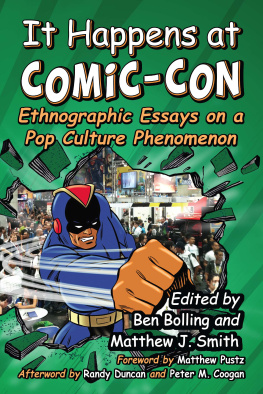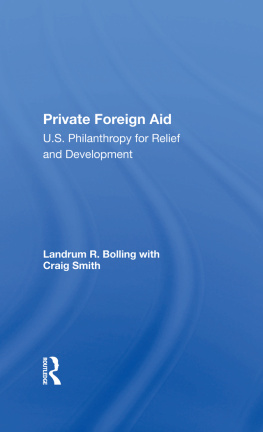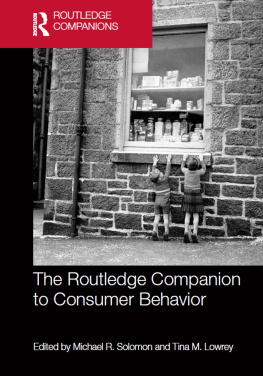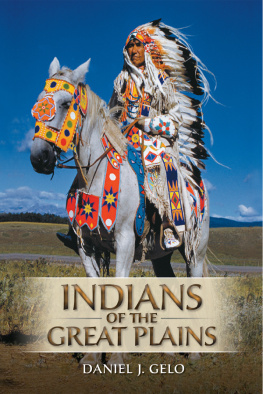Kathleen Bolling Lowrey - Shamanism and Vulnerability on the North and South American Great Plains
Here you can read online Kathleen Bolling Lowrey - Shamanism and Vulnerability on the North and South American Great Plains full text of the book (entire story) in english for free. Download pdf and epub, get meaning, cover and reviews about this ebook. publisher: Chicago Distribution Center (CDC Presses), genre: Politics. Description of the work, (preface) as well as reviews are available. Best literature library LitArk.com created for fans of good reading and offers a wide selection of genres:
Romance novel
Science fiction
Adventure
Detective
Science
History
Home and family
Prose
Art
Politics
Computer
Non-fiction
Religion
Business
Children
Humor
Choose a favorite category and find really read worthwhile books. Enjoy immersion in the world of imagination, feel the emotions of the characters or learn something new for yourself, make an fascinating discovery.

- Book:Shamanism and Vulnerability on the North and South American Great Plains
- Author:
- Publisher:Chicago Distribution Center (CDC Presses)
- Genre:
- Rating:3 / 5
- Favourites:Add to favourites
- Your mark:
- 60
- 1
- 2
- 3
- 4
- 5
Shamanism and Vulnerability on the North and South American Great Plains: summary, description and annotation
We offer to read an annotation, description, summary or preface (depends on what the author of the book "Shamanism and Vulnerability on the North and South American Great Plains" wrote himself). If you haven't found the necessary information about the book — write in the comments, we will try to find it.
Shamanism and Vulnerability on the North and South American Great Plains — read online for free the complete book (whole text) full work
Below is the text of the book, divided by pages. System saving the place of the last page read, allows you to conveniently read the book "Shamanism and Vulnerability on the North and South American Great Plains" online for free, without having to search again every time where you left off. Put a bookmark, and you can go to the page where you finished reading at any time.
Font size:
Interval:
Bookmark:
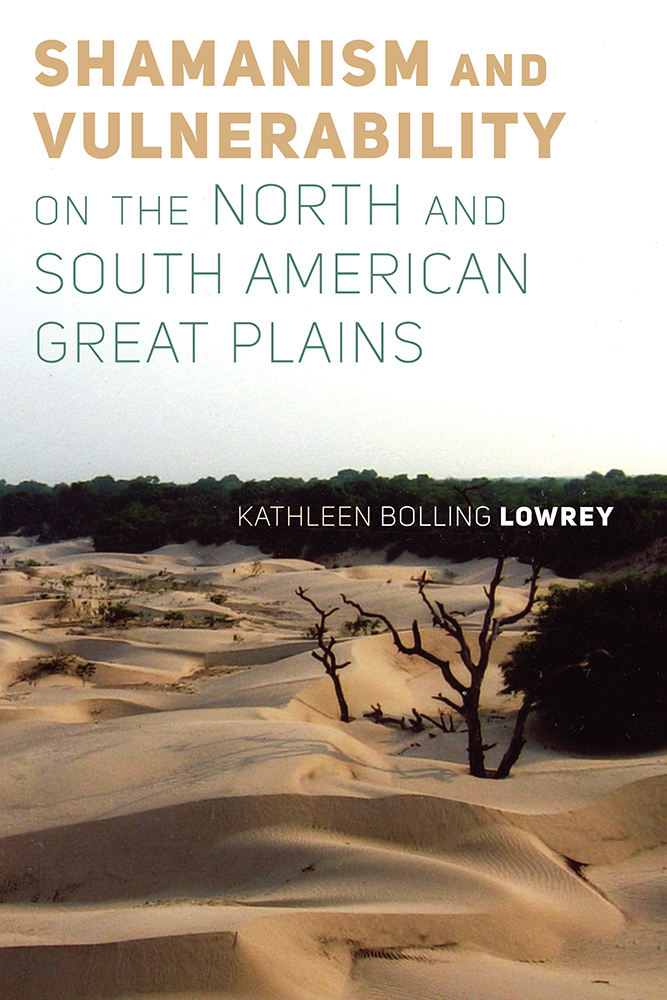
Kathleen Bolling Lowrey
U NIVERSITY P RESS OF C OLORADO
Louisville
2020 by University Press of Colorado
Published by University Press of Colorado
245 Century Circle, Suite 202
Louisville, Colorado 80027
All rights reserved
 The University Press of Colorado is a proud member of the Association of University Presses.
The University Press of Colorado is a proud member of the Association of University Presses.
The University Press of Colorado is a cooperative publishing enterprise supported, in part, by Adams State University, Colorado State University, Fort Lewis College, Metropolitan State University of Denver, Regis University, University of Colorado, University of Northern Colorado, University of Wyoming, Utah State University, and Western Colorado University.
ISBN: 978-1-64642-034-6 (hardcover)
ISBN: 978-1-64642-035-3 (paperback)
ISBN: 978-1-64642-036-0 (ebook)
https://doi.org/10.5876/9781646420360
Library of Congress Cataloging-in-Publication Data
Names: Lowrey, Kathleen Bolling, author.
Title: Shamanism and vulnerability on the North and South American Great Plains / Kathleen Bolling Lowrey.
Description: Louisville : University Press of Colorado, [2020] | Includes bibliographical references and index.
Identifiers: LCCN 2020026992 (print) | LCCN 2020026993 (ebook) | ISBN 9781646420346 (hardcover) | ISBN 9781646420353 (paperback) | ISBN 9781646420360 (ebook)
Subjects: LCSH: ShamanismBoliviaIsoso. | Guarani IndiansBoliviaIsoso. | Indians of South AmericaGran ChacoHistory. | Indians of North AmericaGreat PlainsHistory. | Indigenous peoplesSocial conditions.
Classification: LCC GN475.8 .L69 2020 (print) | LCC GN475.8 (ebook) | DDC 299.8/1144dc23
LC record available at https://lccn.loc.gov/2020026992
LC ebook record available at https://lccn.loc.gov/2020026993
The University Press of Colorado gratefully acknowledges the support provided by the University of Alberta toward the publication of this book.
Cover photograph by the author.
My first, purest impulse was to preface this book with an enemies list rather than with acknowledgments. I spend almost infinitely more time ruminating over slights than feeling gratitude for favors and therefore am certain to leave out people whom I should remember in this accounting.
To begin with, my deep thanks to the two very kind anonymous reviewers of this book, my editor Charlotte Steinhardt, and the excellent staff at University Press of Colorado.
The peace of mind necessary to writing was provided in considerable measure by skilled childcare providers. Birgit Muschkeit above all, but also Bozena Wojno, Julia Babcock, Erin Wall, and staff members at Students Union and Community Early Learning Centre at the University of Alberta and Primrose Place Out of School Care in Edmonton.
Teachers and professors who shaped me intellectually in ways that inform all of my thinking and writing include at Jakarta International School, Ranu Dally and Hideh Harger; at the University of North Carolina at Chapel Hill, Patricia Bedinger and Judith Farquhar; at the University of Chicago, my doctoral committee members Nancy Munn, Elizabeth Povinelli, and Alan Kolata and in particular my doctoral dissertation cosupervisors Terence Turner and Manuela Carneiro da Cunha.
During and after my fieldwork, a series of colleagues and acquaintances in Bolivia, Paraguay, Argentina, the United States and Canada provided crucial help at key junctures: Alberto Gimnez, Jrgen Riester, Adelina Pusineri, Raquel Salazar, Gundolf Niebuhr, Hedy Penner, Irma Penner, Benjamin Feinberg, Jos Braunstein, Lorena Crdoba, Laura Graham, Michael Brown, Suzanne Oakdale, William Fisher, Faye Ginsburg, David Price, Augusto Oyuela-Caycedo, Nancy Peluso, Andrew Graybill, Sarah Carter, Robert Smith, and Charles Schweger. A reading course with Alice Lam shaped the cross-cultural consideration of dependency made in this book. Charlene Nielsen generated the map of Guaran Occidental communities that appears in . Harvey Friebe digitized many of the books images, including from the era of slides. A grant from the Social Sciences and Humanities Council of Canada supported my fieldwork in Paraguay, a grant from the Support for the Advancement of Scholarship fund at the University of Alberta enabled follow-up fieldwork in Bolivia, and a subvention from the Faculty of Arts and Office of the Vice President (Research) at the University of Alberta partially supported the publication of this book.
It would be impossible to name everyone to whom I owe something in Isoso. Although the text for the most part uses pseudonyms except in the cases of the already-renowned shamans Miguel Cuellar and Jorge Romero, here I will thank by their real names some of the many Isoseo people, not all of whom are still living, who have offered me kindnesses ranging from loaning me horses, crossing the Parapet in pitch darkness at night, beautiful handwoven vks, good-natured joking during long bus rides, gossip over mates and meals to places to live and to sleep, dream interpretation in the morning, sincere interest in my life and family, and sincere sharing of their own lives and families: Bonifacio Barrientos Cuellar, Nelson Justiniano, and Walter Ayala of the Capitana del Alto y Bajo Isoso; Eugenia Lucero, Bonifacio Martnez, Marleni Martnez, Cleotilde Segovia, Martire Curaripe, Martn Segovia, Teodosia Segovia, Luisa Yerema, Dora Cayaguiri, Eulogio Cayaguiri, Justina Prez, Feliciano Martinez, Rogelia Tercero, Alberto Ramn, Juana Justiniana, Sergio Segundo, Pedro Ortiz, Teolina Velsquez, Eusebio Guacani, Wilson Garcia, Celia Segundo, Jacinta Segundo, Ramona Miguel, Braulia Miguel, Audencio Lucero, Zoila Medina, Fidelia Segovia, Porfirio Guacani, and Katalina Guacani in Ibasiriri; Flix Segundo, Laura Burir, Carlos Segundo, Norma Segundo, Jos Luis Segundo, Rudn Segundo, Malvina Segundo, Marquesa Burir, Francia Snchez, Secundino Soria, Carmen Soria, Adela Choipa, Acencia Romero, Lidia Romero, Francisco Iti, ngel Esteban, Xenobia Sitai, Marleni Snchez, Salome Vaca, Juana Chiku, Custodio, Claver Guarucupi, and Eliceo in G i rampemb i renda (the strikethrough indicates nasalization); Guillermo Baldivieso, Hilberto Snchez, Guido Ortiz, Catalina Montenegro de Ortiz, Eduardo Cuellar, Andrs Cuellar, Elsa Montenegro, Roman Vaca, Venancia Cuellar, Brunhilda Vaca, Benjamin Vaca, Saulo Vaca, Ismael Vaca, Joel Vaca, Belisaida Vaca, Domiciana Cuellar, Jess Cuellar, David Cuellar, Petronila Cuellar, Adriana Cuellar, Ana Karen Cuellar, Federico Cuellar, Anastasia Cuellar, Miguel Cuellar, Cristin Cuellar, Eldi Montenegro and Guadalupe Araz in Aguarati and Aguaratimi. Yasoropai ye ye. Tpa tomae peretare, ngaraa aka i pegui.
Not all of these friendships have lasted, but what remains are memories of the fun of combining shared sympathies, senses of humor, and interests in anthropology with Isabelle Combs, Diego Villar, Federico Bossert, Silvia Hirsch, and Bret Gustafson. Ever since we met in a dissertation writing group for discouraged Latin Americanists, Michael Reynolds has remained a sharp, funny, and warmhearted interlocutor about life and career. Only Jessica Jerome herself understands what I owe her both personally and professionally, but a lovely passage from Robert Louis Stevensons In the South Seas captures something like it:
There is no bond so near as a community in that unaffected interest and slightly shamefaced pride which mark the intelligent man enamoured of an art. He sees the limitations of his aim, the defects of his practice; he smiles to be so employed upon the shores of death, yet sees in his own devotion something worthy. (1998 [1896]: 48)
Next pageFont size:
Interval:
Bookmark:
Similar books «Shamanism and Vulnerability on the North and South American Great Plains»
Look at similar books to Shamanism and Vulnerability on the North and South American Great Plains. We have selected literature similar in name and meaning in the hope of providing readers with more options to find new, interesting, not yet read works.
Discussion, reviews of the book Shamanism and Vulnerability on the North and South American Great Plains and just readers' own opinions. Leave your comments, write what you think about the work, its meaning or the main characters. Specify what exactly you liked and what you didn't like, and why you think so.


